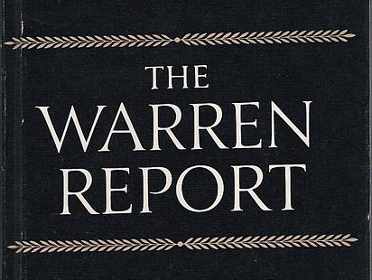Warren Commission

Establishment of the Warren Commission and Its Members
The Warren Commission, officially called the President’s Commission on the Assassination of President John F. Kennedy was established by the US President Lyndon B. Johnson on November 29, 1963. The Commission that got its name after its chairman Earl Warren, Chief Justice of the U.S. Supreme Court was created with the purpose to investigate the circumstances of the assassination of John F. Kennedy in Dallas, Texas, one week earlier. The other members were the U.S. senators John Sherman Cooper of Kentucky and Richard B. Russell of Georgia, the members of the House of Representatives Gerald Ford of Michigan (later 38th President of the United States) and Hale Boggs of Louisiana, the former President of the World Bank John J. McCloy and the former Director of Central Intelligence Agency Allen W. Dulles. The former U.S. Solicitor General, J. Lee Rankin was chosen as the Commission’s general counsel who also appointed 14 assistant counsels and 12 staff members.
Investigation of the Warren Commission and the Final Report (Warren Report)
The Commission was given unlimited investigating power in order to answer the questions surrounding Kennedy’s murder as well as the death of his alleged assassin Lee Harvey Oswald. During the next 10 months, the Warren Commission went through the evidence obtained from the Dallas Police, Secret Service, FBI, CIA, military intelligence and other federal agencies, and took the testimonies of 552 witnesses of the event. Its conclusions were presented in a 888-page final report that came to be known as Warren Report and was made public on September 27, 1964. President Johnson received the Warren Commission report only three days earlier.
Findings of the Warren Commission
In its final report, the Warren Commission concluded that Kennedy was murdered by Oswald who acted alone and shot the President from the Texas School Book Depository Building. It also concluded that Oswald did not have enough time to fire his rifle fast enough to hit the President and Texas Governor John Connally who was sitting in front of Kennedy in the open limousine, however, it accepted the single bullet theory which claims that Kennedy and the Governor were struck by the same bullet. Oswald was also found guilty of killing the Dallas police officer J.D. Tippit less than one hour after Kennedy’s assassination. No connection was found between Oswald and a Dallas night club owner, Jack Ruby who killed Oswald in front of the Dallas Police Headquarters on November 24, 1963. Ruby was declared innocent of conspiracy.
Criticism of the Warren Commission and Findings of the United States House of Representatives Select Committee on Assassinations in 1979
The findings of the Warren Commission were initially received well by the American public but its conclusions soon became questioned. The New Orleans district attorney, Jim Garrison began an independent investigation in 1966 and charged a prominent New Orleans businessman, Clay Shaw with conspiracy in Kennedy’s assassination, however, Shaw was found not guilty by the jury in 1969. The continuing skepticism about the conclusions of the Warren Report led to reexamination of the evidence by the United States House of Representatives Select Committee on Assassinations (HSCA) in 1976. In its final report issued in 1979, the HSCA concluded that the assassination of John F. Kennedy was probably a result of conspiracy and that more than one person were involved in the President’s murder. However, it did not identify other “conspirators“ nor determined the motives of the conspiracy and its extent.




